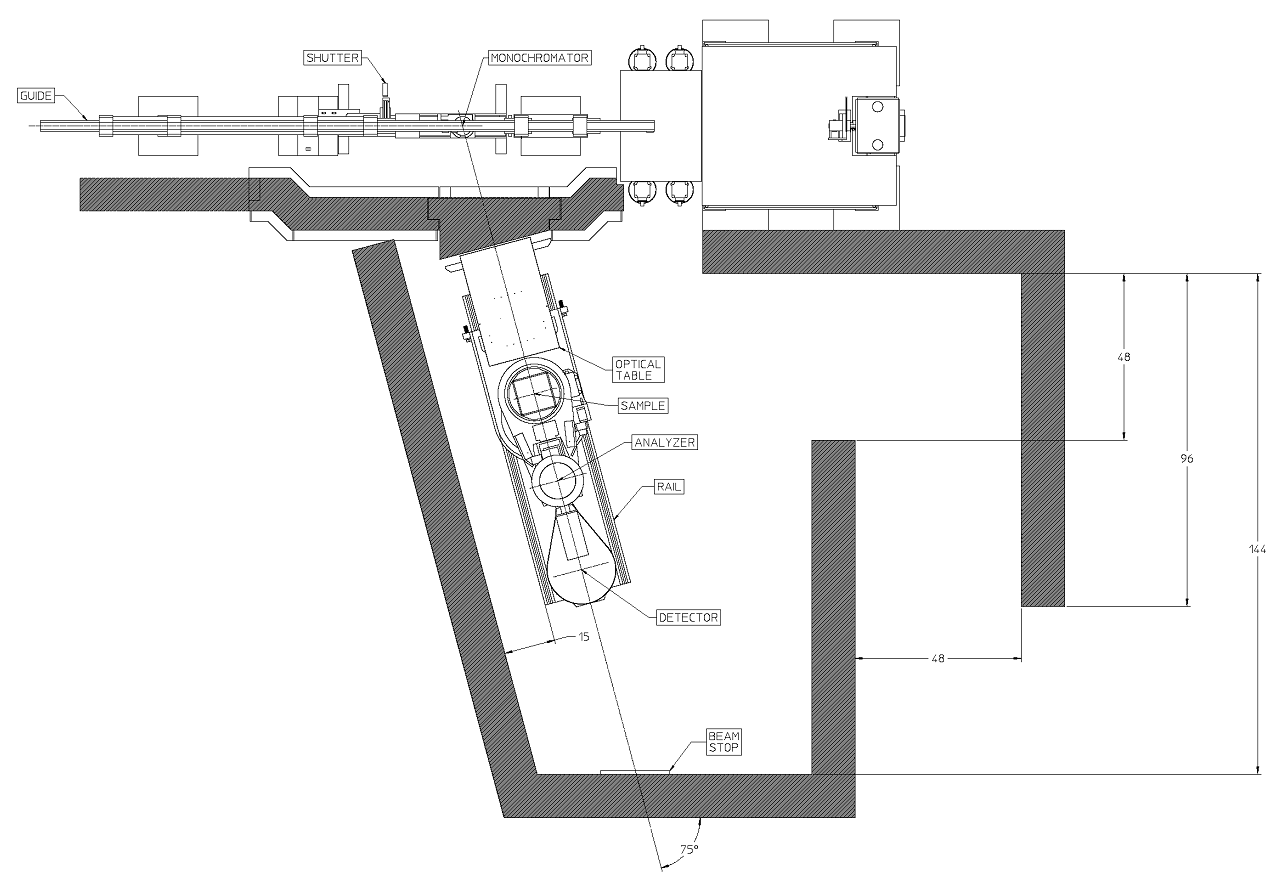
PHADES (Polarized 3He and Detector Experiment Station) is typically used for the testing of 3He and related optics, detector optimization, and crystal alignment. A pyrolitic graphite monochromator set at a take-off angle of 75 degrees produces a monochromatic beam of 4.1001(5) Å with fixed energy of 4.8662(6) meV. Flux is relatively low at 2 x 10^6 n/cm^2/s. The vertical divergence of the neutron beam is also small at about 1 degree. The instrument is simply designed, yet highly versatile.
A series of collimators are available for use. Located at the beam exit, a 25 cm by 75 cm optical table of variable height may be used to support loads up to 100 kg. Optional removal of the optical table combined with translation of the secondary spectrometer of over 1 m allows large sample environment equipment to be accomodated. Samples are typically mounted on a standard Huber goniometer with ± 22 degree tilt and ± 10 mm translation. Beam to sample heights are 6 inches (152 mm) and 2.75 inches (70 mm) from the Huber base. A second pyrolitic graphite crystal is available for use as an analyzer. A pencil detector (A4) travels from -7 degrees to +150 degrees, providing a maximum Q of 2.96 Å-1 and corresponding minimum sample reflection d-spacing of 2.123 Å. Water and air lines are available to support sample environment equipment including electromagnets. In the future, software for hkl crystal alignment is planned.
To request time on PHADES please submit a short beam time request through the IMS System. Any questions may be sent to the instrument contacts, listed at the bottom of this page.
Instrument Schematic

|
|

